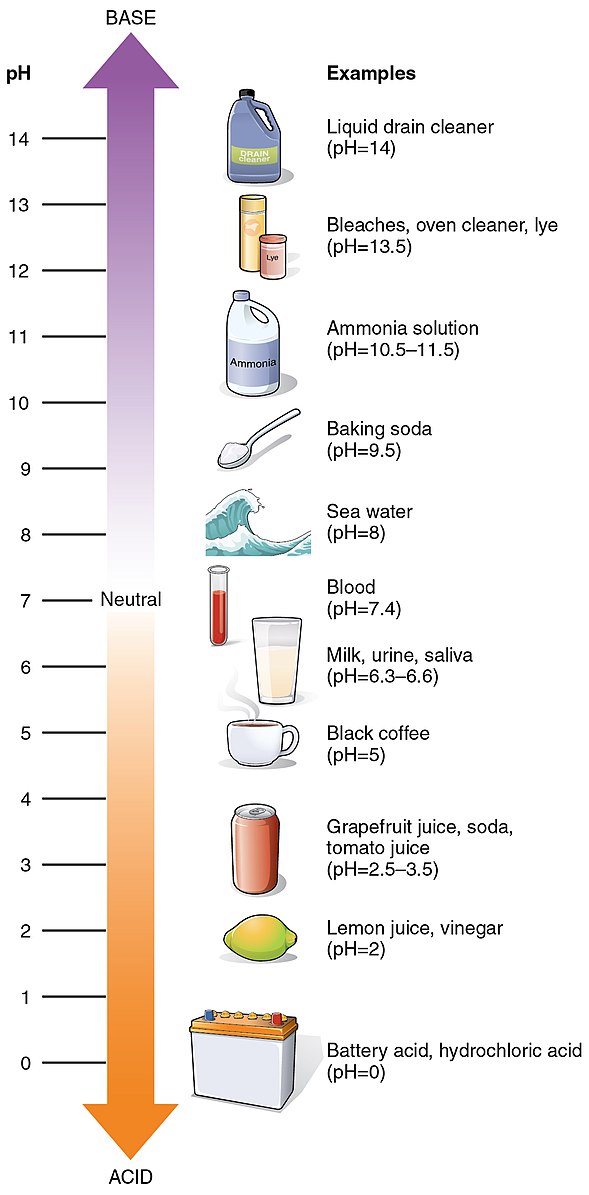The pH value of tap water in the United Kingdom typically falls within a range of 6.5 to 9.5, as specified by the water quality regulations. This range indicates that the water is slightly acidic to slightly alkaline. The ideal level for drinking and tap water is between 7 – 8.5, as our systems can only manage a lower pH level. Acidic drinking water damages pipes with a cement lining, and metals are also sensitive to pH levels below 7.5. Drinking water with a low pH is more enriched with radioactive uranium and provides the perfect breeding ground for the bacteria Legionella.
Understanding the pH of Tap Water in the UK
The pH level of tap water in the United Kingdom is regulated by the World Health Organisation (WHO) and must fall within the range of 6.5 to 9.5. This range ensures that the water is safe for consumption and does not pose any significant health risks.
Ideal pH Range for Drinking Water
The ideal pH level for drinking and tap water in the UK is between 7 – 8.5. This range is considered optimal for human consumption because our bodies can effectively manage and process water within this pH range. Drinking water with a pH outside of this range can lead to various issues, such as:
- Acidic Water (pH < 7): Acidic drinking water can damage pipes with a cement lining and cause corrosion in metal pipes, leading to the release of harmful metals into the water.
- Alkaline Water (pH > 8.5): Highly alkaline water can have a bitter or metallic taste and may not be suitable for certain medical conditions or sensitive individuals.
Factors Affecting the pH of Tap Water
The pH level of tap water in the UK can be influenced by various factors, including:
- Water Source: The pH of the water source, such as groundwater or surface water, can affect the overall pH of the tap water.
- Pipe Materials: The age and condition of the pipes in the water distribution system can impact the pH level, as certain materials like galvanized steel or copper can react with the water and alter the pH.
- Chemical Additives: The addition of chemicals, such as chlorine or fluoride, during the water treatment process can also affect the pH of the tap water.
- Contaminants: The presence of various contaminants, such as minerals or organic matter, can influence the pH level of the tap water.
Balancing the pH of Tap Water
 Image source: OpenStax College
Image source: OpenStax College
If the pH level of your tap water is not within the ideal range, there are several methods you can use to balance it:
Water Filtration
Using a water filter can help remove impurities and balance the pH level of your tap water. There are various types of water filters available, including:
- Reverse Osmosis (RO) Filters: These filters can effectively remove a wide range of contaminants, including minerals that can affect the pH.
- Activated Carbon Filters: These filters can help remove chlorine and other chemicals that can impact the pH.
- Ion Exchange Filters: These filters can help remove or add specific ions to the water, adjusting the pH level.
pH Balancers
You can also use pH balancers to adjust the pH level of your tap water. These products are designed to raise or lower the pH, depending on your needs. Some common pH balancers include:
- Baking Soda: Adding a small amount of baking soda to your water can help raise the pH level.
- Lemon Juice: Adding a few drops of lemon juice can help lower the pH level of your tap water.
It’s important to test the pH of your tap water regularly and make adjustments as needed to ensure it falls within the safe and optimal range of 6.5 to 9.5.
Potential Health Concerns
While the pH level of tap water in the UK is generally within the safe range, there are some potential health concerns to be aware of:
Acidic Water
Drinking water with a low pH (below 7) can lead to the release of metals from plumbing and fixtures, such as copper and lead. This can be especially problematic for babies and children, as they are more susceptible to the harmful effects of these metals.
Alkaline Water
Consuming water with a high pH (above 8.5) can lead to a bitter or metallic taste, and may not be suitable for individuals with certain medical conditions, such as kidney or digestive issues.
Conclusion
The pH of tap water in the United Kingdom is an important factor to consider for the health and well-being of residents. By understanding the ideal pH range, the factors that can affect it, and the methods available to balance the pH, you can ensure that your tap water is safe and suitable for consumption.
Regular testing and monitoring of your tap water’s pH level, along with the use of water filters or pH balancers, can help maintain the optimal pH range and provide you with high-quality, safe drinking water.
References:
– United Utilities – pH Fact Sheet
– United Utilities – About Your Water: pH
– Luqel Water – The pH Value of Drinking and Tap Water in United Kingdom
– The Voice of London – How Clean is London’s Tap Water?
– Skuma Water – London Tap Water
– YouTube – The pH of Tap Water in the UK
